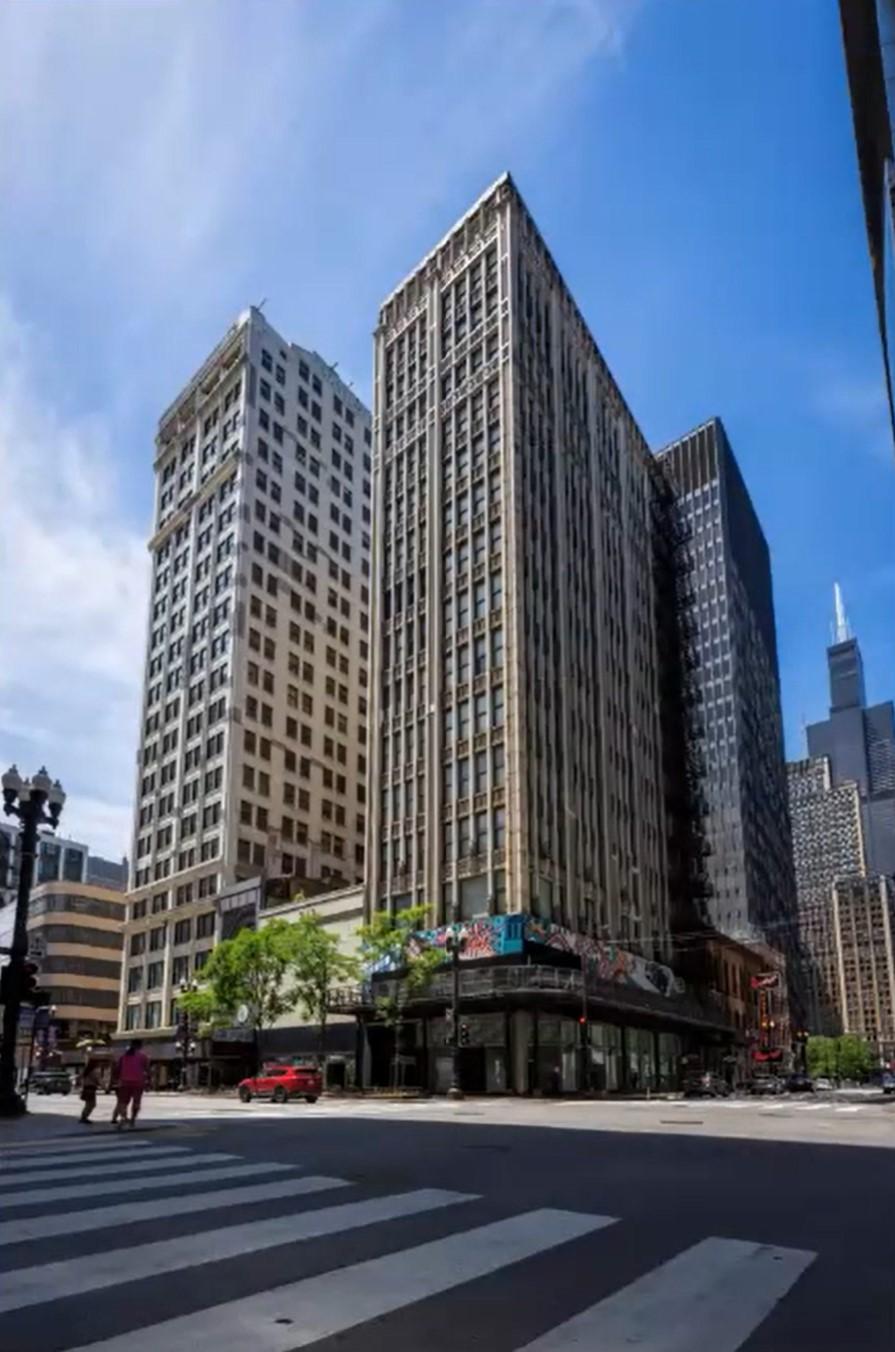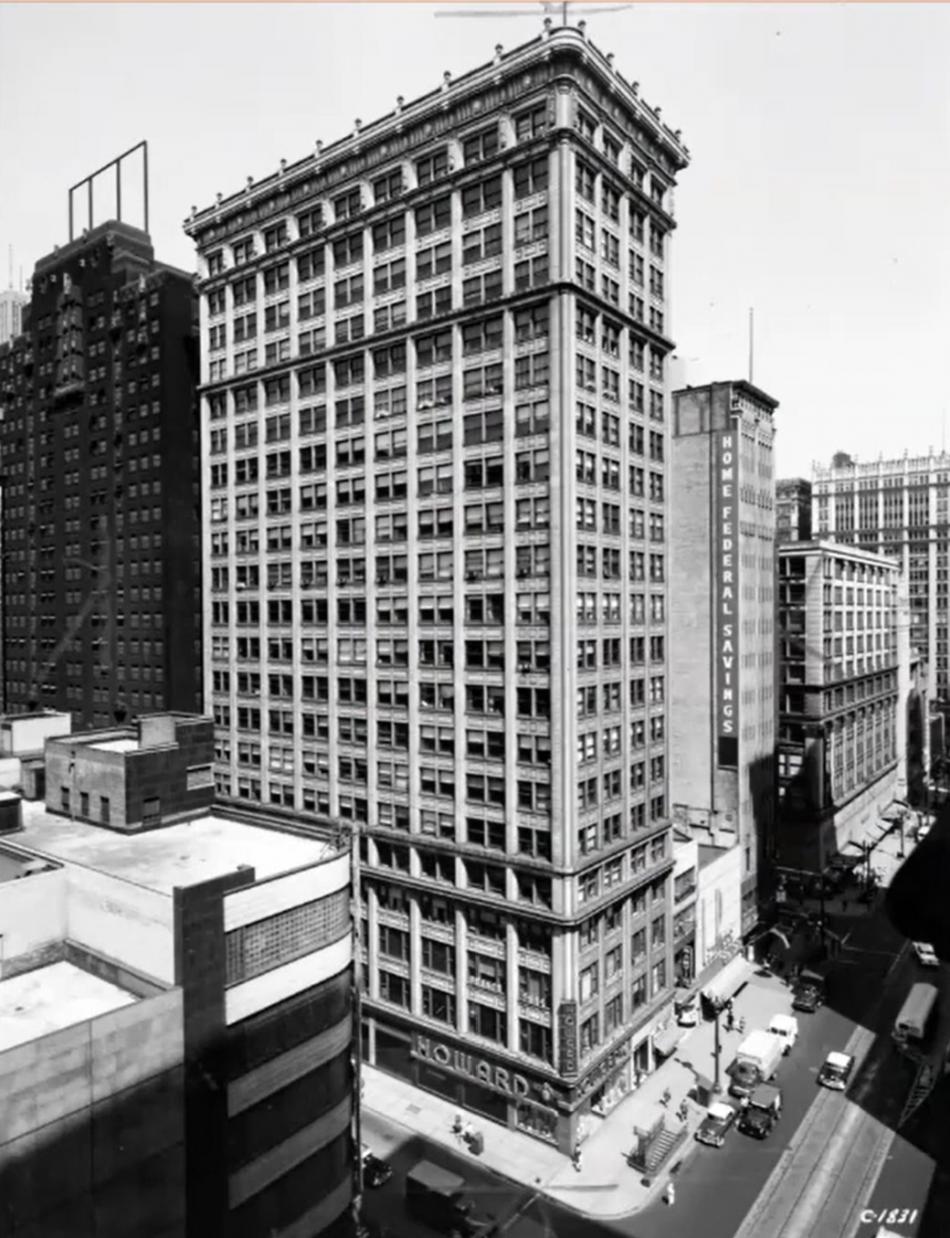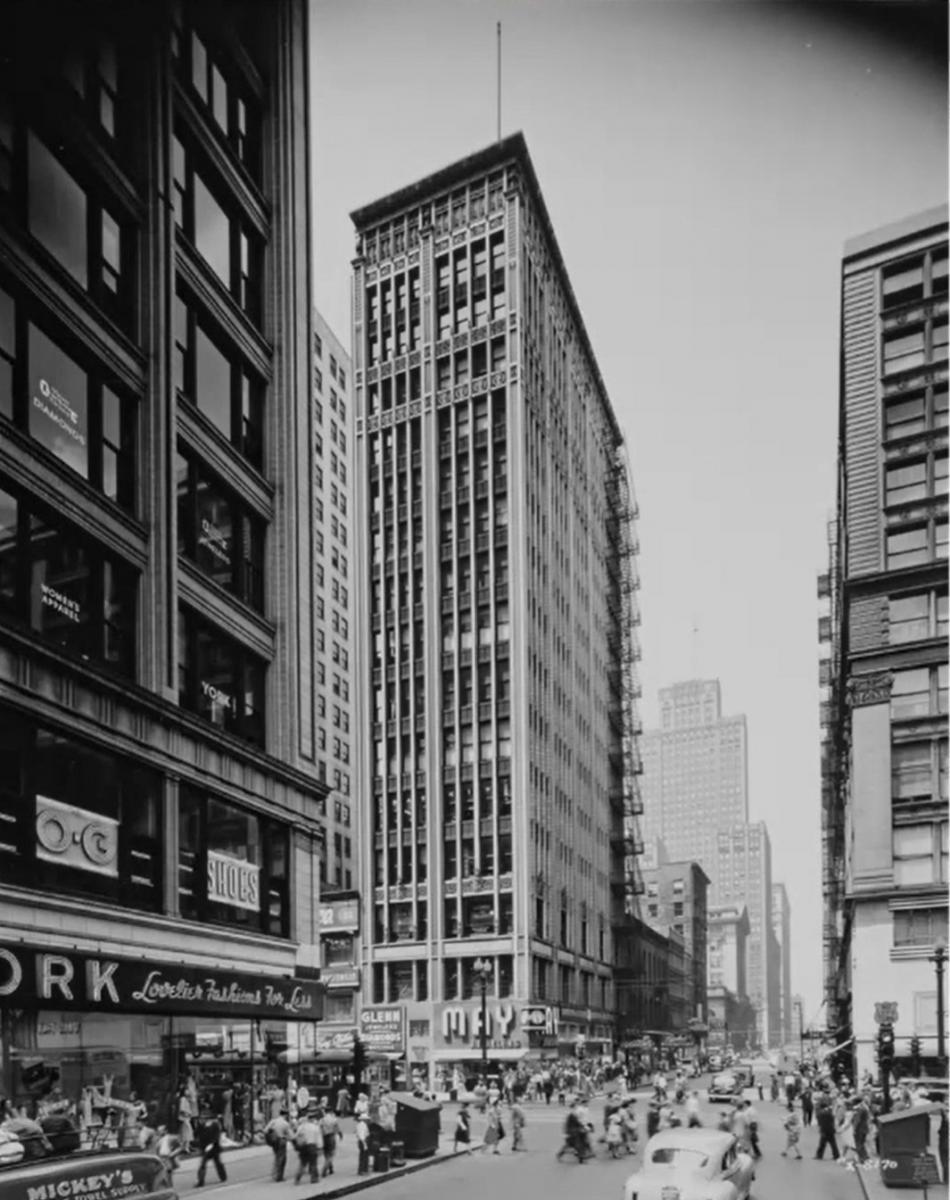The General Services Administration (GSA) has hosted the first of multiple public meetings as they work towards finalizing a proposal to demolish the Century and Consumers Buildings in the name of safety for the adjacent courthouse. Listed on Preservation Chicago’s 2022 Chicago 7 Most Endangered Buildings list back in March, the buildings have come under immediate threat as Congress passed the 2022 Consolidated Appropriations Act which earmarked $52 million for the buildings’ demolition. After coming before the Commission on Chicago Landmarks twice, the body stopped short of designating the buildings as Chicago landmarks despite meeting landmark criteria.
Built in 1915 by Holabird & Roche, the Century Building at 202 S. State is a 16-story commercial style building with late Gothic detailing, clad in white terracotta. Built in 1913, the Consumers Building is the second tower out of the four buildings, standing 21 stories and designed as a Chicago School office building with Classical Revival details. Clad in white terracotta, the building was designed by Mundie & Jensen. Located at the corner of W. Adams St and S. State St, the plan would also demolish the two low rise structures in between the towers.
As the GSA seeks to demolish the buildings, they must go through multiple federal processes before any kind of work can begin. The National Environmental Policy Act (NEPA) requires federal agencies to consider the anticipated environmental impacts of proposed federal actions as part of their decision-making process and to provide appropriate public involvement. Occurring simultaneously, the GSA is also going through the National Historic Preservation Act (NHPA) process to accommodate historic preservation concerns with the needs of the federal undertaking through consultation with the State Historic Preservation Office (SHPO).
For the NEPA process, the GSA has posted their Notice of Intent and has begun the public meetings. In Spring 2023, they will publish the draft Environmental Impact Statement (EIS) and solicit public comment on the draft. The EIS will be finalized and published in Fall 2023 which will identify the preferred alternative, and Winter 2024 will see the issuance of the Record of Decision and selected alternative.
What are the alternatives? Here they are:
Alternative A: Demolition - GSA is considering the demolition of four buildings at 202, 208, 214, and 220 S. State. Funds appropriated by Congress are only available for demolition, securing the site, and landscaping the site after demolition has been completed.
Alternative B: Viable Adaptive Reuse - The GSA would consider a viable adaptive reuse of the four buildings contingent on meeting a set of restrictions that are necessary to meet the security needs of the Dirksen U.S. Courthouse. No federal funds are available for rehabilitation, preservation, or restoration of the buildings.
The 15 criteria are as follows:
- The Federal government must retain ownership interests to achieve its security objectives, as determined by the government in its discretion.
- Occupancy/Use: Properties shall not be used for short-term or long-term residential or lodging, places of worship, or medical treatment, services, or research. No use that requires access to outdoor areas is permitted.
- Access to the roof is restricted to maintenance and repair activities. Personnel and materials that will be present in this area shall be subject to clearance and controls necessary to meet court security objectives.
- Developer would have no access or use rights to Quincy Court.
- Loading is prohibited in Quincy Court and otherwise restricted in a manner to achieve court security. Loading on State or Adams Streets would be subject to local ordinance requirements.
- Occupants and users of the buildings shall have no sight lines into the Dirksen Courthouse, the Dirksen Courthouse ramp, or the Quincy Court properties owned by GSA.
- No parking or vehicle access is permitted on or within the properties.
- Developer is responsible for staffing, at their expense, security 24 hours with personnel approved by the Federal Protective Service or an entity to whom security services are delegated by Federal Protective Service.
- Developer must obtain and maintain access control systems to prevent unauthorized access to any location within the structures. Each exterior entrance point must have an intrusion detection system and access control system installed, and Developer must provide federal law enforcement access to each system.
- Developer must install and maintain interior and exterior security cameras and provide federal law enforcement officials with access and the ability to monitor the feeds in real time.
- Developer must install exterior lighting necessary to achieve courthouse security objectives.
- Perimeter Security: Developer must prevent unauthorized access to the properties that would result in an unapproved sight line.
- Fire escapes, and any other structures that would allow access from the street, must be removed.
- All construction documents and specifications for any renovation, rehabilitation, modification, or construction of any portion of the building (interior or exterior) will be subject to review and approval by federal law enforcement agencies.
- No project may start without the advance approval of GSA.
Alternative C: No Action - GSA would continue with the status quo, leaving the buildings vacant with significant repairs needed. Limited federal funding would be available for any future maintenance.
For the NHPA process, the GSA has posted their Notice of Intent and has initiated the NHPA Section 106 Process with SHPO. Winter 2022/2023 will see the definition of Area of Potential Effects (APE) and identify properties within the APE. They will evaluate properties within the APE for National Register of Historic Places eligibility and determine if historic properties may be affected. In Spring/Summer 2023, the GSA will assess effects on historic properties and coordinate with consulting parties. In Fall 2023 they will seek to resolve adverse effects on historic properties and the Section 106 process should be completed by Winter 2024.
In the meantime, the GSA has done a conditions assessment and will be stabilizing and selectively disassembling the fire escapes and parapets on the buildings to further ensure safety until the final decision is made on the future of the buildings.
The public can submit comments via email to StateStreet@gsa.gov or by mail to Joseph Mulligan, General Services Administration, 230 S. Dearborn Street, Suite 3600, Chicago, Illinois 60604. Comments must be submitted by Monday, December 12, 2022.










